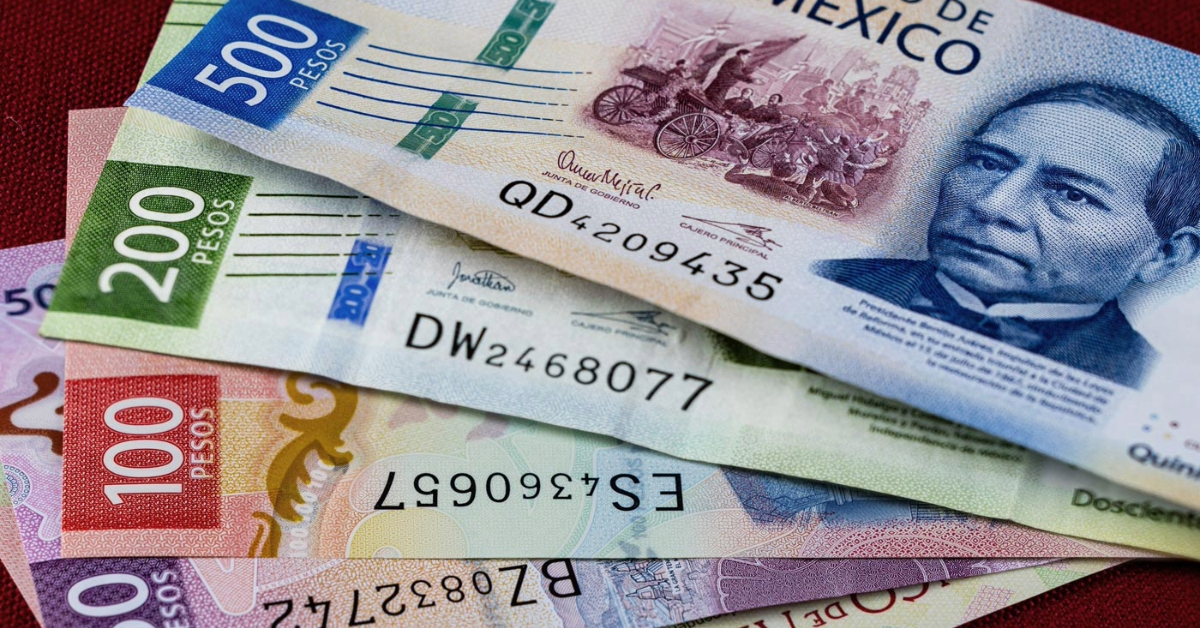Puerto Vallarta, Mexico – In a notable display of market confidence, the Mexican peso appreciated by 0.35 percent against the U.S. dollar on Thursday, closing at 19.5373 pesos per dollar. This advance of 6.77 cents over Wednesday’s settlement of 19.6050 pesos reflects growing optimism among currency traders following the announcement of a “grand trade deal” between the United States and the United Kingdom. Market participants viewed the Anglo-American pact as a positive signal for ongoing tariff negotiations with China, prompting fresh inflows into emerging-market currencies, including the peso.
Market Movements and Intraday Range
Throughout the trading session, the peso traded within a relatively narrow band. The currency reached an intraday high of 19.5127 and a low of 19.6233 per dollar, underscoring a degree of volatility as traders weighed the implications of concurrent international developments. Meanwhile, the Intercontinental Exchange’s Dollar Index (DXY) — which measures the dollar against a basket of six major currencies — climbed 0.71 percent to 100.62 points, reflecting broader strength in the U.S. currency amid shifting risk sentiment.
U.S.–U.K. “Grand Trade Deal” Sparks Optimism
At the heart of Thursday’s positive tone was the joint announcement by U.S. President Donald Trump and British Prime Minister Keir Starmer of a comprehensive trade agreement set to reduce tariffs and expand market access on both sides of the Atlantic. Described by both leaders as the most ambitious bilateral trade arrangement since the U.S.–Mexico–Canada Agreement (USMCA), the deal encompasses reductions on agricultural products, manufactured goods, and digital services.
Although some of the more contentious provisions — including intellectual-property protections and state-subsidy rules — remain under negotiation, financial markets broadly cheered the headline announcement. “Investors are interpreting the U.S.–U.K. deal as a green light for broader de-escalation in global trade tensions,” said Mariana López, head of Latin American currency strategy at GlobalFX Advisors. “That sentiment has spilled over into expectations that Washington and Beijing may follow suit in scaling back punitive tariffs.”
Renewed Focus on U.S.–China Tariff Talks
Buoyed by the U.S.–U.K. breakthrough, market watchers turned their attention to a scheduled meeting this weekend in Geneva between senior U.S. trade officials and their Chinese counterparts. Those discussions are intended to address outstanding tariff disputes initiated during the Trump administration. While details remain scarce, a successful dialogue could lead to phased tariff rollbacks on both sides — a scenario that would likely reignite investor appetite for riskier assets.
According to people familiar with the matter, the U.S. delegation will press for more transparent reporting on China’s compliance with intellectual-property agreements and commitments to purchase U.S. agricultural exports. China, in turn, is expected to seek relief from recent increases in American duties on electric vehicles and semiconductors.
Domestic Inflation Edges Higher, Yet Stays Within Target
Back on home soil, data released by the National Institute of Statistics and Geography (INEGI) showed Mexico’s headline inflation rate ticked up to 3.93 percent on an annual basis in April. Although this represented a modest acceleration from March’s 3.85 percent reading, it still resides comfortably within the Bank of Mexico’s (Banxico) official target band of 2 percent to 4 percent.
Analysts noted that the uptick was primarily driven by a rebound in energy and certain food prices, following temporary subsidies and supply-chain constraints earlier in the year. Core inflation — which excludes volatile items such as fresh foods and energy — rose to 4.15 percent, signaling that underlying price pressures remain slightly elevated but manageable.
Implications for Banxico’s Monetary Policy
The inflation data and currency strength arrive just weeks ahead of Banxico’s next policy decision, scheduled for May 15. Despite the uptick in consumer prices, a majority of market participants continue to forecast a half-percentage-point rate cut at that meeting, bringing the benchmark overnight rate down to 7.25 percent.
“Despite the inflation spike in April, we maintain expectations of a 50-basis-point cut at the May 15 meeting,” said Invex economist José Pérez. “However, it will be important to analyze whether the governing board modifies its statement given the recent resistance from the National Consumer Price Index.”
Investors are also watching global rates as major central banks, including the U.S. Federal Reserve and the European Central Bank, signal more dovish stances. A coordinated easing cycle internationally could place additional downward pressure on Mexico’s borrowing costs.
Historical Context and Outlook
Over the past year, the peso has weathered periods of both strength and strain, influenced by external factors such as U.S. Federal Reserve policy and China’s economic growth trajectory, as well as domestic issues like fiscal discipline and electoral cycles. Since peaking above 20.50 pesos per dollar last summer, the peso has gradually regained ground amid a more stable global risk environment and improved trade prospects.
Looking ahead, market analysts caution that the peso’s near-term trajectory hinges on two main variables: the outcome of the upcoming U.S.–China talks and domestic inflation trajectories. Should China agree to meaningful tariff relief and if Banxico follows through on rate cuts without stoking inflationary expectations, the peso could test levels below 19.40 in the weeks to come.
However, any setback — such as a breakdown in trade negotiations or evidence of second-round inflationary effects — could quickly reverse recent gains. “The peso remains sensitive to shifts in global risk appetite,” noted Ricardo Santos, a currency strategist at Banorte. “Traders should remain alert to headline risk around trade developments and domestic policy signals.”
Puerto Vallarta, Mexico - In a notable display of market confidence, the Mexican peso appreciated by 0.35 percent against the U.S. dollar on . . .











